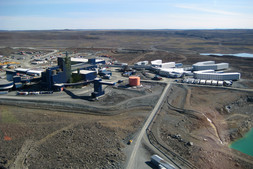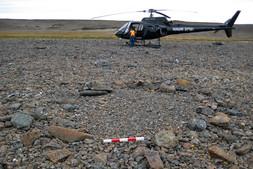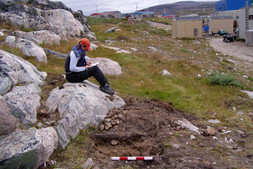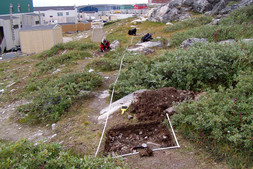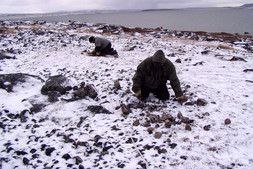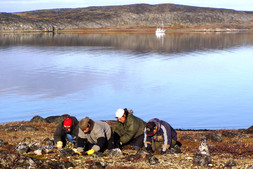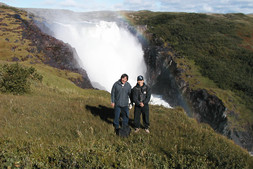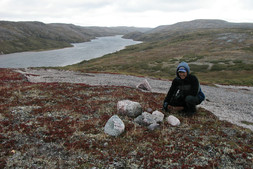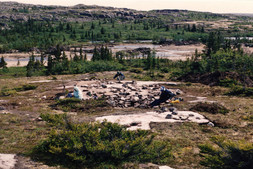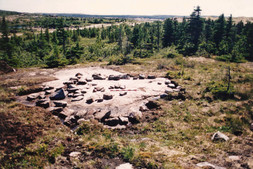- About
- Discovering Archaeology
- Projects and Activities
- Online Resources
- References
Archaeology
Community and Entreprises Services
Protecting Nunavik’s archaeological heritage while supporting regional development
Avataq Cultural Institute’s archaeology department works on matters concerning the preservation of Nunavik’s archaeological heritage for the benefit of the region’s communities. Almost annually, we address archaeological preservation concerns linked to modernization and development work in northern villages, as well as at sites such as mines and hydroelectric installations. We have adopted a dynamic approach that allows for heritage preservation while at the same time encouraging Nunavik’s modernization.
The inhabitants of Nunavik are aware of the value of their archaeological heritage, and thus concerned by any alteration of their territory. They are equally concerned with the recording and collection of artifacts found at archaeological sites within Nunavik. The Avataq Cultural Institute is ideally suited to carry out all necessary work in this regard, and is also capable of establishing the proper lines of communication between local populations and environmental or archaeological organizations and companies. Our position allows us to ensure the proper evaluation and preservation of Nunavik’s heritage in a manner consistent with the local communities’ desires for the preservation of their cultural heritage.
Avataq’s mandate from the Elders of Nunavik
In 1985, Avataq was commissioned by the Elders of Nunavik to carry out or supervise all archaeological work done in the region. To comply with this important mandate, and to ensure effective communication with northern communities, all businesses, whether active in the environmental field or any other, must contact Avataq several months before beginning any work with an archaeological component.
Following are our recommendations:
- Avataq should be notified prior to the beginning of any archaeological research in Nunavik (allowing us, among other things, to advise and inform the local population on the nature of the archaeological work being done);
- at least some local inhabitants should be employed during the project’s work phase;
- a copy of all reports generated by the project should be sent to Avataq;
- upon completion of the work, an exhibition featuring all artifacts discovered during the project should be organized in the nearest local village or community;
- Avataq should be informed of any decisions made concerning the archaeological collections discovered in the region.
Avataq’s archaeological achievements: some examples
Archaeological inventory of the Raglan mine, 2008
A 2008 archaeological inventory carried out on the property of the Raglan Xstrata-Nickel mine, located on Hudson Strait.
Salvage excavation at site IcGm-77, 2005
In 2005, a partial salvage excavation at site IcGm-77 in Inukjuak ensured that the site would not be damaged by heavy machinery being used in the area. The project also allowed for the collection of numerous surface-level artifacts, often retrieved by local children.
Archaeological work in Inukjuak, 2004
In September and October 2004, salvage excavations were carried out in Inukjuak, at archaeological sites IcGm-43 and IcGm-a. This work was commissioned by the Makivik Corporation as part of preparations for the development of maritime infrastructure.
Archaeological evaluation at geotechnical investigation sites along the Nastapoka River, 2002
Carried out in September 2002, this archaeological inventory sought out sites within and alongside the zones affected by Hydro-Québec’s geotechnical work along the Nastapoka River.
Salvage excavation at site GhGk-63, 1990-1991
Two consecutive seasons (1990 and 1991) were allotted to archaeological salvage excavations at the Dorset-era site GhGk-63, located in the municipality of Kuujjuaraapik. The project was organized at the municipality’s request in order to salvage archaeological data that was threatened by the site’s planned use as a training area for heavy-vehicle operators.

